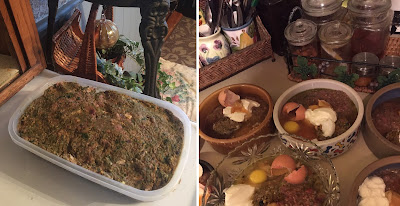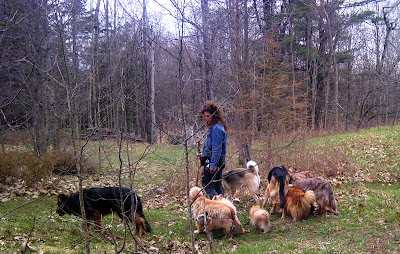DOGS & DOG CRATES - TO USE OR NOT USE A DOG CRATE - THAT IS THE QUESTION…
It has been my experience, that when we (humans) take a dislike to the whole idea of crating, it is an emotion based reaction. I know that when I first started enjoying the companionship of dogs I thought that putting a dog in a crate was an awful and unnecessary thing to do. That was a long time ago.
My experiences since, have taught me that – when used the right way for the right reasons a dog crate can be an important supportive, comfortable and safe space for a dog. Used in the wrong way it can be a psychologically & physically punishing place for a dog.
Should all dogs be confined to a crate at some point – I do not think so. I believe crates should only be used when there is a real benefit for the dog in doing so. Crating should never be viewed or utilized as a place to put a dog as a punishment.
As a Dog Whisperer, understanding and using psychology is essential to making the world a better place for dogs. Whether I am teaching people how to have a great relationship with their new dog, or repairing a human-dog relationship that has gotten ‘off-track’ – my first focus is always the psychology of the situation.
In light of the psychological side of things – what do you think…does a dog need to be ‘crate trained’ or is it the dog’s people that need to be trained on how to properly use a crate for their dog? Whether your dog will ‘like’ using a crate is 99% up to you. If you are not comfortable with the idea your dog will not be either. Dogs are very sensitive beings – they take their cues from their human companions, on how to regard situations, people/other animals, places and things.
What is the worst thing about this crate? - It's so comfy I hate getting up and getting the sleep out of my eyes, so I can go for my walk!
THE PSYCHOLOGY OF THE WORD ‘CRATE’…and why some people dislike the very thought of crating a dog. The word ‘crate’ has a harsh sound as it starts with a hard ‘C’ sound it is not a pleasant sounding word. I think names can influence how we think about people, places and things. Don’t believe me? Then why do so many celebrities change their names? We also associate the word crate with the word ‘cage’ After all, a crate is a cage. From a human perspective, one might think of being confined in a cage as part of a nightmare or of being imprisoned. We know for a fact that people who experience torture at the hands of other humans are often confined & caged. Most of us have seen (either first hand or in the media) dogs and other animals who have been confined to cages in an abusive, neglectful manor. For those with soft hearts it seems a cruel device, a cruel approach to place a dog under such restraint – enforced and absolute confinement. For those with domineering and cold hearts it seems the perfect tool to support their absolute control and dominance of another living being.
The pathology of ‘’dislike’ becomes very evident – there can be a lot of negative emotions and negative images wrapped around one word!
SO, WHEN DOES IT MAKE SENSE TO USE A CRATE?
Puppies and Adult Dogs –
If you are leaving your puppy unattended for any duration of time and you have not yet coached/mentored your puppy regarding what not to ‘get into – a properly set-up crate is a safety net. After all, you would not leave a young child alone under similar circumstances – a puppy is no different. If the crate is set-up properly, the puppy stays safe and disasters are avoided. The notion of having access to unlimited space in the absence of other people or dogs can be completely overwhelming for some puppies and adult dogs. Using a crate can enable and support a calm, confident state – for you & your dog! Trouble can be as simple as a few shredded tissues to a completely chewed, destroyed couch! It should be noted that not all puppies or adult dogs will get into such trouble when left alone – but some will! The introduction of proper leadership early on in your relationship with your dog has a huge impact on your dog’s ability to cope with and adapt to situations.
Helping and Curing a Dog with Separation Anxiety -
If a dog has separation anxiety a crate can be an important tool in their rehabilitation. Like people who have a phobia of large open spaces, a dog left alone in a home can feel overwhelmed. If the separation anxiety is left untreated a dog can quickly progress from mild anxiety to a state of intense anxiety – this is psychological harm and can also result in physical harm. For example, a dog that is in acute stages of separation anxiety can chew through walls, wood, metal – in so doing they can cut their mouths and cause other bodily harm. Crating is not a cure, but it can be used to support the rehabilitation process. Crating coupled with good leadership including a structured approach to coaching/mentoring the dog to navigate through situations that it fears, etc. will help the dog become a secure, confident, well-balanced canine.
Working with a ‘red zone’ dog who is in the early stages of rehabilitation -
Time in a crate can be a time to relax, for human and canine. If the dog is introduced to the crate in the right way, it can become a place that the dog will associate with being in a calm/relaxed state. If introduced & used in the wrong way a crate can become a place of power & subsequently aggressive behaviour. A dog should never exclusively ‘own’ the space around or within a crate.
Helping a Dog who becomes anxious during thunderstorms –
A dog’s sensitivity to environmental changes that occur prior to or during a thunderstorm (changes to ambient air pressure, noise, visual, electrical energy, etc.) vary from individual as it does with humans. A dog’s fear may be triggered by one or more of these typical factors. The dog’s fear can also be triggered by its human companion’s discomfort (tensions, fear, etc.).
One of the worst things to do is to allow a dog to run around, pace, etc. in an anxious state. At this point the dog is driven by fear and does not know where to go or what to do to feel safe. It is really important that the dog’s human takes the leadership role and shows the dog what it should do. Crating can be used to help calm the dog. Crating coupled with calm, well-balanced human influence can be one step in assisting the dog to change its fearful association with thunderstorms.
IF YOU INTRODUCE YOUR DOG TO A CRATE THE RIGHT WAY – in almost all cases the dog will not fear or dislike the crate. Once a dog has found a crate to be a calm and comfortable place to be, the dog will often choose to use the crate as a place to go and rest. As long as you leave the crate door open when not in use, the dog can choose to use it when he/she pleases.
I have ten dogs in my dog pack and they all enjoy going off to lie in their crates when they feel like it. They are allowed to lie down wherever they like in the house – including on couches. Sometimes they prefer a crate. No one dog in my pack owns a crate – they all share the spaces in the house including crates. For example, when I am preparing their food, my smallest dog (a four-pound Pomeranian) will sometimes go to lie down in a large crate located in the kitchen and share the space within the crate with one of my German Shepherds or with my Australian Shepherd. There are other places in the kitchen they can ‘hang-out’, but they often choose the crate. Why do they choose the crate? The crate is a space of comfort and calm and all of the crates in my house are comfy – they are lined with dog beds and some have pillows too!
Even dogs who are capable of escaping any crate – like my dog Sarah (German Shepherd X Husky) will accept being in a crate as I have coached & mentored her in the right way. She is a wily, intelligent and resourceful canine who spent the better part of her first year as a stray – wiliness meant survival!
CAN A CRATE BE MADE INTO A COMFORTABLE SPACE?
Yes absolutely! The following provides a few guidelines / ideas…
Make sure you get the right size crate for your dog; a dog should be able to stand up & turn around in its crate.
As long as your dog does not chew and destroy (if your dog does this, your dog has an issue that need to be addressed. The chewing is just a symptom of the issue!) you can put a dog bed or crate liner on the bottom of the crate to make it a comfy place to be. I also put pillows in some of my dog’s crates.
Never place a crate in a location that gets overly warm or where the air quality is very poor. We humans don’t appreciate such conditions neither do our dogs! Remember that cold air stays close to the ground. If your dog is not great with cold temperatures make sure the crate is not located where there is a cold draft.
For more information on making simple, easy slip covers and liners for crates, you can go to the ‘Tips’ page of my website, scroll down the page to ‘A slip cover for your pet’s bed – simple to make, easy to remove and clean’. For more tips, click here.
Holistic Diet, Nutrition, Wellness Services Tailored to Your Individual Dog and Cat
For information about my holistic diet, nutrition and wellness services, visit my holistic wellness services page.
Maintain good health | Address acute and chronic health issues | Pre and post surgery support and recovery
My holistic wellness services are available worldwide via video consultation.
🌎 USA | Canada | UK | Europe | Australia | New Zealand | Asia | South and Central America | Africa | UAE
📱FaceTime | Facebook | Skype | WhatsApp
To set-up your holistic wellness consultation get in-touch via email, go to my contact me page.
Holistic Behavioral Services for Your Dog
For information about my holistic behavioral services, visit my holistic behavioral services page.
For dogs of all ages, sizes and breeds.
My behavioral services are available worldwide via video consultation.
🌎 USA | Canada | UK | Europe | Australia | New Zealand | Asia | South and Central America | Africa | UAE
📱FaceTime | Facebook | Skype | WhatsApp
To set-up your holistic behavioral session get in-touch via email, go to my contact me page.
Affiliations to Companies
✓ None.
✓ I don't sell food, supplements, or other products.
✓ I'm not aligned with any companies.
Article and graphics by Karen Rosenfeld.










